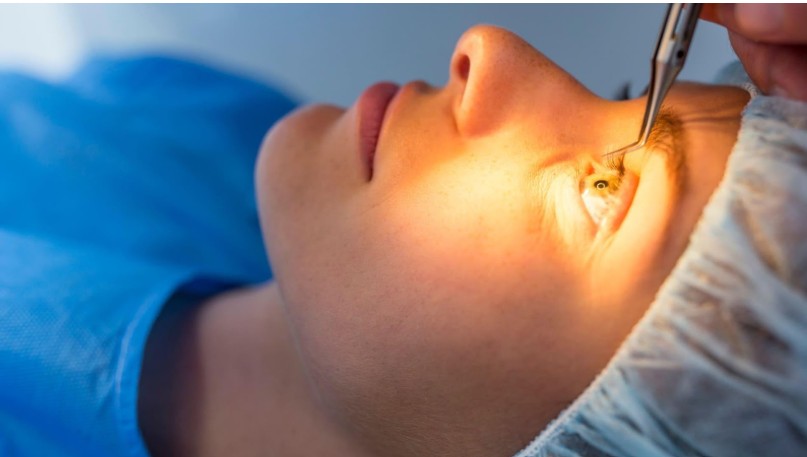The surgical procedure known as LASIK functions as one of the most chosen remedies to treat various vision disorders including nearsightedness and farsightedness and astigmatism. Through this procedure millions of individuals achieved unassisted clear vision which enabled them to say goodbye to both glasses and contact lenses. LASIK surgery exists as a medical procedure that presents advantages together with possible negative effects.
Therefore, it stands out as an attractive permanent vision correction solution because of its long-lasting advantages and high patient satisfaction rates. This essay examines the advantages and disadvantages of LASIK treatment specifically highlighting the main reasons many individuals choose this innovative surgical vision correction method. Learn more here https://www.onlymyhealth.com/can-eye-power-change-after-lasik-and-what-factors-can-impact-vision-12977824884.
The Pros
Immediate and Long-Lasting Vision Improvement
The main advantage of LASIK surgery leads patients to experience immediate vision enhancement. Most patients experience highly noticeable vision improvements starting from the day after surgery as their eyes recover to 20/20 vision and better.
The result of this surgery reshapes the cornea for permanent vision correction and stands above the transitory vision correction available through glasses or contacts. LASIK gives patients lasting visual correction for ten or more years because the restoration process results in a long-term vision correction system.
Freedom from Glasses and Contact Lenses
LASIK provides the greatest convenience to everyone who has used glasses or contact lenses for extended periods. Rising each day would mean spotting the world without needing to reach for your eyewear. With LASIK patients gain complete freedom to enjoy swimming or sports activities or daily tasks because they do not need their glasses or contact lenses anymore.
Patients avoid the need to carry glasses and the caretaking of eye contacts and dry eye discomfort that regularly occurs when using lenses. Freedom allows patients to experience life in a whole new way which brings big positive changes to their lifestyle while allowing them to enjoy outdoor activities more easily. Discover more info on this page.
Easy and Quick Procedure
Many people think that laser eye surgery is hard to do or hurts, but LASIK is surprisingly quick and doesn’t hurt at all. The laser only works for a few seconds per eye, so the whole process usually takes 15 to 20 minutes for both eyes.
Patients don’t feel any pain because numbing eye drops are put in their eyes before the treatment. Some people may feel some light pressure or pain, but the process isn’t painful and doesn’t involve stitches or bandages.
Also, recovery is very quick. Within 24 to 48 hours, most people can go back to work and do normal things again. When compared to other surgeries, LASIK has very little rest and can be done very quickly.
A High Rate of Success and Safety
Know that Lasik in Manhattan, one of the most effective surgeries you can get today. Studies show that after surgery, over 96% of people have 20/20 vision or better, and there are very few problems. Over the years, new technology has made LASIK even safer and more accurate, lowering risks and making results better for patients.
Complications are very uncommon, and when they do happen, they are generally mild and only last a short time. Modern laser technology, like custom wavefront-guided LASIK, lets each person’s eye be corrected in a way that fits their unique shape, which results in even better vision.
Long-Term Cost Savings
Even though you have to pay more for LASIK up front, it can save you money in the long run. Over the course of a lifetime, the cost of contacts, glasses, cleaning solutions, and eye tests can add up to a lot of money.
With LASIK, patients don’t have to pay for glasses or contacts anymore, so it’s a cost-effective choice in the long run. A lot of clinics even give payment plans to help people afford surgery.
Better Night Vision
In the early days of LASIK, some people had problems with glare, halos, or seeing at night. But improvements in LASIK technology over the years have made these problems much less common.
Wavefront mapping technology is used in newer custom LASIK procedures. This technology makes a detailed 3D map of the cornea, which lets the corrections be more exact. This helps keep your night vision as clear as possible, which makes driving at night or looking at bright lights a lot more pleasant.
The Cons
Not Everyone is a Candidate
Unfortunately, not everyone can get LASIK, even though it works very well. Some people may not be able to get LASIK because they have thin corneas, very dry eyes, or uneven astigmatism.
Each person will need to have a thorough consultation with a skilled LASIK surgeon to find out if the process is appropriate for them. In some situations, different surgeries like PRK (Photorefractive Keratectomy) may be suggested instead.
Short-Term Side Effects
Most people who have LASIK have short-term side effects while they are improving. Some of these are dry eyes, a little pain or irritation, being sensitive to light, and slight fluctuations in vision. These side effects generally go away in a few weeks, though, as the eyes heal. For example, lubricating drops recommended by a doctor can help with dry eyes, and most people feel normal again in a month or two.
Vision Changes with Time
LASIK gives effects that last a long time, but it doesn’t stop the aging process. In their 40s or 50s, some people may start to need reading glasses even after LASIK because of presbyopia, which is age-related farsightedness.
This happens naturally with age, so it doesn’t matter if you have LASIK or not. If needed, a LASIK enhancement treatment can sometimes be done years after the surgery to make the vision even better.
Rare Complications
Serious complications with LASIK are very rare, but they can occur. In extremely rare cases, patients may experience overcorrection or under correction, which might require additional adjustments.
Other risks, such as infection or corneal inflammation, are preventable by following proper post-surgical care and attending follow-up appointments.
